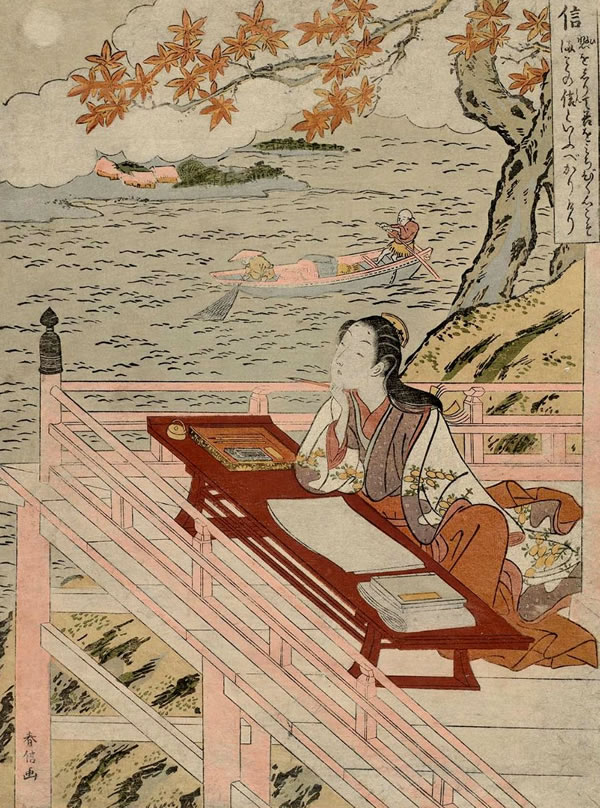Murasaki Shikibu was a noblewoman of the dominant Fujiwara clan in Japan. Fujiwara women had a monopoly of being wives and concubines of the emperors, while the men ruled in the sovereigns’ names. She was lady in waiting to the empress and author of a novel titled Tale of Genji, which is acclaimed as a great and pioneering literary work.
The Japanese language belongs to the Altaic family group; it is polysyllabic and is related to Korean. Since there was no native written script, the leaders of Japan adopted the Chinese writing system in the sixth century. For several centuries afterward upper-class Japanese men put great focus on learning Chinese and copying Chinese works and Buddhist manuscripts.
Japanese government documents, historical and legal works, and literary and poetic works were all written in Chinese characters and indistinguishable from works on similar subjects in Chinese. When writing Japanese names they had to employ Chinese characters not for their meaning, but as phonetic signs.
  |
In the ninth century a phonetic style of writing that used abbreviated Chinese characters selected for their sound was created. These syllables were called kana and they were convenient for writing down spoken Japanese.
Although Chinese culture remained very prestigious in Japan, the Japanese court decided to end sending embassies to China in 894, reflecting disorders in China as the Tang (T’ang) dynasty neared its end, and also the growing maturity of Japanese institutions.
 |
| one of the tale of genji ilustration |
In 710 a first permanent capital was established in Nara, modeled on China’s capital Chang’an (Ch’ang-an). Nara was abandoned in favor of a new capital called Heian (later Kyoto) in 794.
Heian became an opulent city where wealth and culture flourished. While men continued to write in Chinese, noble ladies in Heian, who were not burdened with learning literary Chinese, began to write rambling novels, memoirs, and poetry using the kana script.
The most famous writer was Murasaki Shikibu, who wrote Genji Monogatari or Tale of Genji, between 1008 and 1020. It is a romance of the life and loves of an imaginary Prince Genji and portrays the frivolous and decadent court life of the time. It is a sophisticated depiction of Heian society and has great literary merit and psychological insight.
   |
It is the first novel in Japanese literature written in kana. Another work by a court lady, Sei Shonagon, is called Pillow Book, which consists of observations and comments on manners and mores of the Japanese court. Both ladies and their works have been influential in inspiring later works of the same genre.
